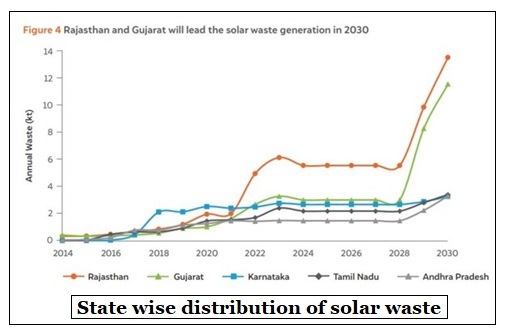7667766266
enquiry@shankarias.in
As per the study by Ministry of New and Renewable Energy, the amount of solar waste produced by the country is expected to reach 600 kilo tonnes by 2030.
Photovoltaic cell is an electronic device that converts the energy of light directly into electricity by means of the photovoltaic effect.

|
Conventional recycling |
High value recycling |
|
|
|
Global regulatory landscape to address solar waste |
|